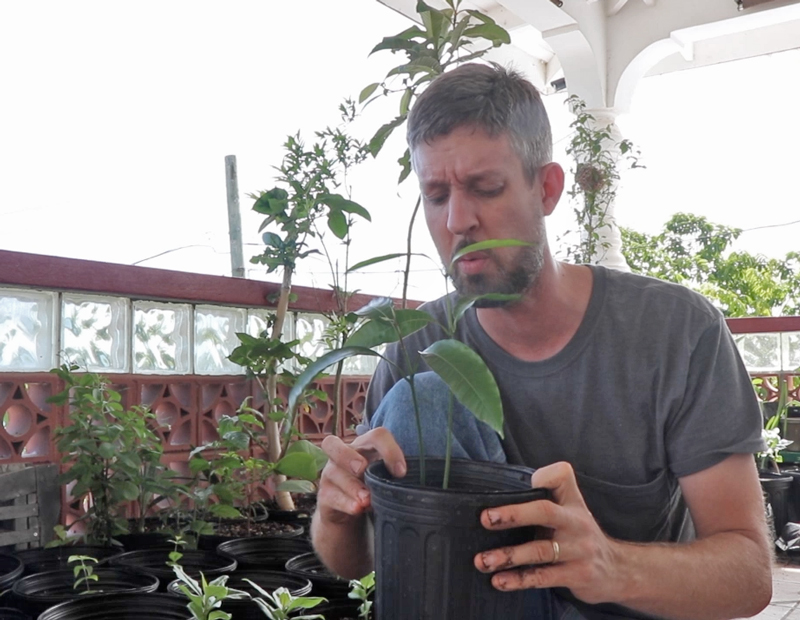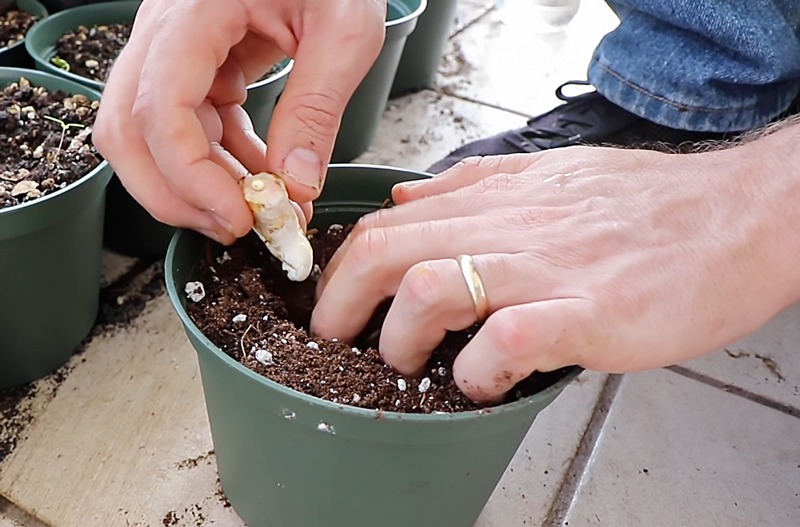A couple of days ago I posted on mango propagation and how I am growing mangoes from seed.
And looking confused.

I’m not really confused, though, I just play a confused mango seed grower on YouTube.
Here’s how I’m starting mango seeds:
I’ve got a big pile of mango pits on my counter right now, covered with fruit flies. They need to be cleaned and planted.
The goal? To grow lots and lots of mangoes in search of a better variety. With lots of seedlings, I also get the chance to do extreme pruning without any loss.
As I have been researching mango propagation over the last week, I have come across some interesting tidbits.
Long ago I read that polyembryonic mango pits will grow true to type whereas monoembryonic mango pits do not.
It’s quite interesting to see why the polyembryonic seeds create true-to-type trees:
“Poly-embryonic seeds produce a number of shoots, one of which originates from fertilisation. The fertilised seedling is often weak and stunted and should be discarded. The other seedlings are clones of the mother tree.”
They are clones. That is something I did not realize. I thought perhaps they were more like heirloom seeds, where the genetics are close enough from individual to individual that you get the same type of plant, year after year. I didn’t realize it was the exact same type.
This is great, because there is a variety of mango from Trinidad that I quite enjoy, known as “Starch,” which is polyembryonic. The story gets better, though, because polyembryonic trees are capable of fruiting in as little as two years from seed.
The video author writes on his blog:
“When I posted a video showing that my mango tree grown from seed had produced fruits in just 2 years, there was lot of reactions from the viewers. They were of the view that it was not possible to get fruits from a mango tree so quickly, and my tree must have been a grafted tree. But it is really true that the mango tree can produce fruits in 2 to 4 years, if they have been grown from a poly-embryonic seed. The mango tree grown from poly-embryonic seed do not need to be grafted.”
The best mangoes are generally the monoembyonic type, which I assume is because they are able to be bred and crossed easier than the polyembyonic types; however, the variability of seedlings means that they’re not going to all be great. You’ll get some successes and some failures.
Sounds like treasure hunting! It’s a great reason to plant lots of seeds and see what happens.
And if you grow a mango from a pit and it doesn’t turn out well, hey – it’s time to graft!
That’s enough for today. The mango pits on the counter really need tending.


2 comments
Can a moonembryonic mango seed produce more than one tree? I have planted what I thought looked like and google said were monoembryoic and some of these seeds have produced 2 to 5 trees out of the same seed. I’m confused. Can you help me?
It’s gotta be poly, or maybe it split in the sprouting.
Comments are closed.